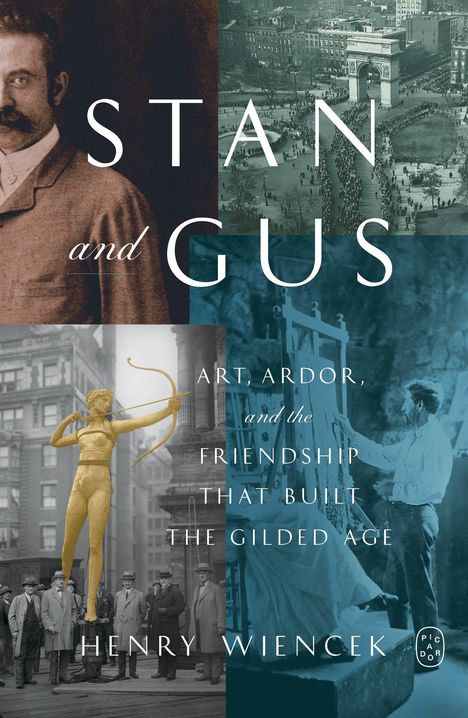Henry Wiencek: Stan and Gus, Kartoniert / Broschiert
Stan and Gus
- Art, Ardor, and the Friendship That Built the Gilded Age
Lassen Sie sich über unseren eCourier benachrichtigen, sobald das Produkt bestellt werden kann.
- Verlag:
- Picador USA, 07/2026
- Einband:
- Kartoniert / Broschiert
- Sprache:
- Englisch
- ISBN-13:
- 9781250437914
- Umfang:
- 320 Seiten
- Gewicht:
- 454 g
- Maße:
- 210 x 137 mm
- Stärke:
- 25 mm
- Erscheinungstermin:
- 21.7.2026
- Hinweis
-
Achtung: Artikel ist nicht in deutscher Sprache!
Weitere Ausgaben von Stan and Gus |
Preis |
|---|---|
| Buch, Gebunden, Englisch | EUR 28,41* |
Ähnliche Artikel
Klappentext
The celebrated architect Stanford White was a louche man-about-town and a canny cultural entrepreneur, the creator of landmarks that raised the stature of the American built environment. Augustus Saint-Gaudens, a sculptor and the son of an immigrant shoemaker, was a moody introvert and a committed procrastinator whose painstaking work brought emotional depth to American statuary. Over years of acquaintance, their relationship evolved into a partnership that defined the art of the Gilded Age.
In Stan and Gus , the acclaimed historian Henry Wiencek tells the story of a fruitful, complicated relationship. After pursuing their own careers in Italy and France, the two men met again back home, where they forged era-defining monuments, including White's Washington Square Arch and Park Avenue Armory in Manhattan and Saint-Gaudens's memorials to Colonel Robert Gould Shaw and Clover Adams in Boston and Washington, D. C., respectively. Over the course of decades, White helped sustain his friend's troubled spirits and protected Saint-Gaudens from impatient clients when he failed to complete projects on time. Meanwhile, Saint-Gaudens challenged White to take his artistic gifts seriously. But alongside the brilliant commissions were sordid debaucheries-and White's sensational murder in 1906.
Throughout, Wiencek sets White and Saint-Gaudens within the larger story of the era known as the American Renaissance, when a new upper class sought to fortify its ascendancy, and its aspirations and delusions of grandeur collided with new aesthetic ideas and two ambitious young men to yield work of lasting beauty.




